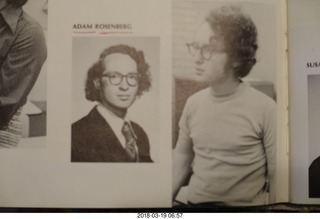
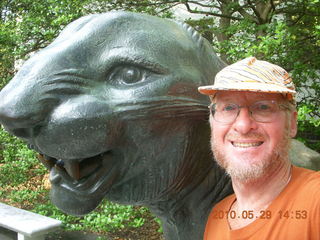

|

|
Decades later, half a century for some, I have seldom been disappointed by the people I admired so long ago and still admire today.
Maybe I've been lucky, maybe I've been more realistic in my expectations, maybe my mother was wrong and the good people are really good. Don't get me wrong, there are terrible people out there who do terrible things. I've been lucky enough not to put those people on the list of people I've truly admired and revered.
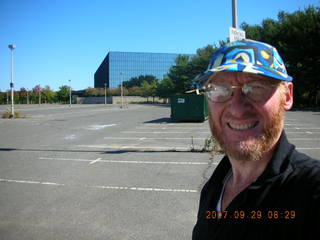 I managed to have a four-day trip
2021 September 8-11
where I got to spend time with several of those people
from long ago.
It's kind of funny for me how long ago these friendships formed.
(I'm counting my high-school classmates as from 1974
even if my real friendships with them are newer)
These friendships range from 1973, 1974, and 1978 to 1986 and 1996,
from forty-eight to twenty-five years ago.
Am I really old enough to have
a significant community of friends from
¼ to ½ of a century ago?
I managed to have a four-day trip
2021 September 8-11
where I got to spend time with several of those people
from long ago.
It's kind of funny for me how long ago these friendships formed.
(I'm counting my high-school classmates as from 1974
even if my real friendships with them are newer)
These friendships range from 1973, 1974, and 1978 to 1986 and 1996,
from forty-eight to twenty-five years ago.
Am I really old enough to have
a significant community of friends from
¼ to ½ of a century ago?
People who travel with me find my itineraries intense, a whirlwind of events. Usually my trips are concerts and places with friends, but this time there were no concerts and there were no places for their own sake. For all four days every event and every meal was with somebody from my past. Whee!
My Biography 1972-1997 - The Short Version
1971-1974 Cheltenham High School
1974-1978 Princeton University - A.B. Mathematics
cum laude
1978-1983 Stanford University - Ph.D. Operations Research
1982-1991 Bell Telephone Laboratories (BTL), later AT&T Bell Labs
1991-1996 Northwest Airlines (NWA)
1996-1997 InterDigital Communications Corporation (IDC)
1997-now more recent stuff in my life
2021 September 7, Tuesday, Red-Eye Airline Flight
I'm lucky enough to have
TSA Clear to get past the lines
and American Airlines Admiral Club lounge to relax before my flight.
By 21:00 (nine o'clock) both were closed,
but at least I have TSA PreCheck
to get through security faster.
My flight from Phoenix (PHX) to Philadelphia (PHL)
was on time and pleasantly smooth
and I had no trouble getting my rental car.
2021 September 8, Wednesday, AMPS
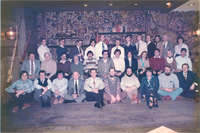
|
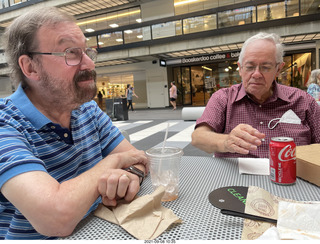
|
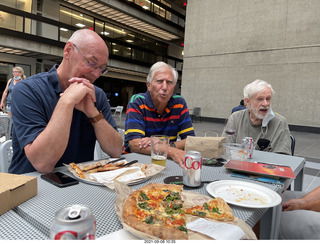
|
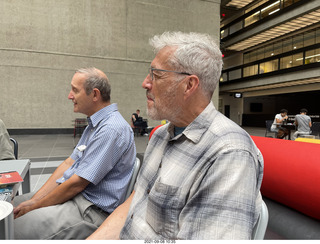
|
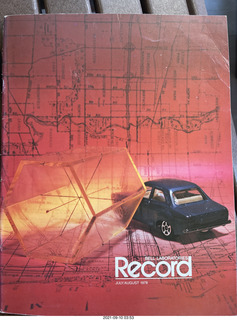
|
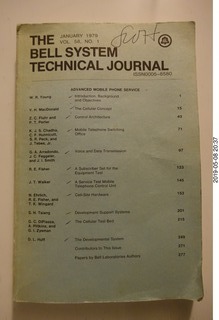
|
We were an amazing group and I'm proud that I was able to earn a seat at their table, then and now.
We had a Zoom meeting in 2021 July and we planned our first post-COVID face-to-face lunch 2021 September 8, Wednesday, at the Crown Palace restaurant. The restaurant was too short-staffed to serve us all at a table, so we all drove to the old Holmdel building, now called BellWorks, with a community-center-style mall and food court in the "ginormous" atrium. Eight of us showed up, Mike, Gaston, John, Dick, Mac, Nelson, Jim, and myself.
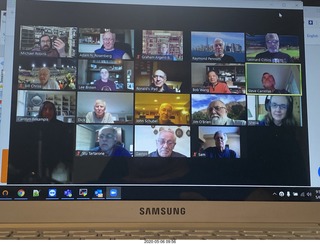 Before the group lunch
I met Nelson at his house on the beach not too far away.
He reminded me why I was so impressed by his engineering skills.
We talked about the cellular technology decisions for AMPS
and the ongoing digital-channel and privacy projects
that became the basis of cellular telephony today.
Before the group lunch
I met Nelson at his house on the beach not too far away.
He reminded me why I was so impressed by his engineering skills.
We talked about the cellular technology decisions for AMPS
and the ongoing digital-channel and privacy projects
that became the basis of cellular telephony today.
Mike chatted with me about his work as a software-test guru, I have spent time recently with John where he talked about work he was still doing in microwave research and heating-and-cooling systems. Dick talked about his continuing work teaching courses in cellular telephony and wireless (radio) communication in general. Mac's acerbic wit was still sharp. Jim told me about his recent new hobby singing in a choir. With the same technical precision and insight I recall from his cellular days as my supervisor he talked about equal temperment versus just intonation where "just" intonation uses pure 3:2 fifths and 5:4 thirds. In every case my cellular buddies were just as insightful and articulate and generally smart now as they were way back then. My morning and lunch were a joyful celebration of the community I so enjoyed working with 1982-1986. We told stories of people we knew and remembered, some to absent friends no longer with us.
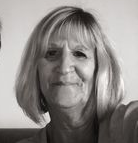 I tell myself they feel I was a valid contributor
to this magnificent ediface of marvelous technical engineering.
In my four years on this cellular-telephone system-engineering team
I earned my place at this terrific table of talent.
I tell myself they feel I was a valid contributor
to this magnificent ediface of marvelous technical engineering.
In my four years on this cellular-telephone system-engineering team
I earned my place at this terrific table of talent.
Wednesday evening I had dinner with Rhonda, a high-school classmate I didn't remember from high school but recently met on Facebook. She was a joy to spend time with, as nice and positive and insightful in person as she was online.
2021 September 9, Thursday, Princeton
The original plan was to get up early and go for a run along the old towpath for the Delaware-Raritan Canal between Kingston and Rocky Hill in New Jersey. Alas, the rain that was supposed to happen on Wednesday happened on Thursday so the canal was muddy.
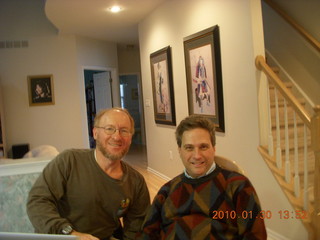 First on my agenda was Professor Bob Vanderbei,
not a Princeton friend, but actually a friend
from Bell Labs who is now teaching
in Computer Science at Princeton University.
Bob did some of the foundational, breakthrough computational work
on new methods of mathematical programming,
a hot topic starting in 1983 in applied mathematics,
especially my own field of Operations Research.
Lest this statement have the snooty tone of an oenophile
calling a new wine a breakthrough because its nose
more closely matches its aftertaste
with no possible importance for any of the rest of us,
let me point out that mathematical programming is the core
of quantitative decision making in most industries for
resource management, price and quantity optimization,
short and long term planning, placing and designing factories,
et cetera.
Bob's contributions are major, that's how we met in 1986,
and Bob's ability actually to program these algorithms
is legendary.
(Keep in mind, also,
that the list of people I admire
in programming computers is short
and Bob Vanderbei is one of them.)
We talked about work, but more about the adventure
of teaching those principles to young, undergraduate minds.
We also talked about more mundane things like
being aging athletes, ear and sinus infections,
faculty aging issues,
and the usual post-flood topic of sump pumps.
As is the pattern for this whirlwind week of
thirty-plus-years-ago nostalgia,
Bob Vanderbei totally lived up
to my ever-positive recollection.
First on my agenda was Professor Bob Vanderbei,
not a Princeton friend, but actually a friend
from Bell Labs who is now teaching
in Computer Science at Princeton University.
Bob did some of the foundational, breakthrough computational work
on new methods of mathematical programming,
a hot topic starting in 1983 in applied mathematics,
especially my own field of Operations Research.
Lest this statement have the snooty tone of an oenophile
calling a new wine a breakthrough because its nose
more closely matches its aftertaste
with no possible importance for any of the rest of us,
let me point out that mathematical programming is the core
of quantitative decision making in most industries for
resource management, price and quantity optimization,
short and long term planning, placing and designing factories,
et cetera.
Bob's contributions are major, that's how we met in 1986,
and Bob's ability actually to program these algorithms
is legendary.
(Keep in mind, also,
that the list of people I admire
in programming computers is short
and Bob Vanderbei is one of them.)
We talked about work, but more about the adventure
of teaching those principles to young, undergraduate minds.
We also talked about more mundane things like
being aging athletes, ear and sinus infections,
faculty aging issues,
and the usual post-flood topic of sump pumps.
As is the pattern for this whirlwind week of
thirty-plus-years-ago nostalgia,
Bob Vanderbei totally lived up
to my ever-positive recollection.
Last Princeton Alumni Day, 2020 February 22,
I snuck into Fine Hall, went up to office 902,
knocked on the door, and asked the professor
if we could meet sometime in the future.
He said "yes" and we decided to meet this day.
We talked about Princeton and the students and the changes
as the student body has become
more international and more competitive.
We talked about the scope of the field of mathematics,
how much it has grown,
especially in the professor's area of complex analysis,
especially especially functions of several complex variables.
We also chatted about our different roles
as academician and industrial mathematician
and some of the interesting problems I solved
in my dissertation and in my career.
We also talked about some mutual friends,
now departed,
Forman Acton
and
Steve Maurer.
Both were my friends for about four decades.
All in all,
forty-eight years later,
I thoroughly enjoyed my meeting with Bob Gunning
and I respected him just as much from the vantage point
of a seasoned industrial mathematician
as I did as a high-school senior.
His intellect was as keen and his smile as broad.
Our conversation was a joy to me and
he seemed to enjoy it as well.
"Please don't wait another forty-eight years."
2021 September 10, Friday, Friends and Family
He is also well traveled.
One time I showed Ira one of those
Hebrew Beligram ads I get
on my gmail account
and he said it was a restaurant in Tel Aviv.
"I'm pretty sure I've eaten there," he said.
We ate in a deli in Huntington Valley.
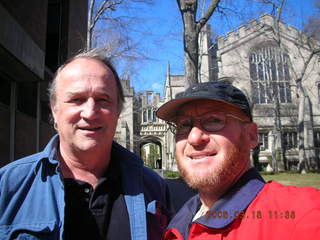 Lunch was with Richard C. Woodbridge,
Princeton Class of 1965.
Some Princeton alumni opened a restaurant PJ's Pancake House
on Nassau Street which is always crowded with a long line,
but they have a not-busy branch in Kingston, New Jersey,
four miles northeast on Route 27 where we dined.
Dick was my patent lawyer for the
LOCI,
U.S. Patent 4182517.
Dealing with a lawyer, even as friendly as a patent lawyer,
was big and scary in 1978 when we met.
Patent lawyers are amazing people,
not only legally educated and smart,
but also engineering and technically savvy.
Dick made it possible for me to patent my invention
and to turn it into a company for minimum investment.
Whatever impressed me then about Dick
continues to impress me now.
Lunch was with Richard C. Woodbridge,
Princeton Class of 1965.
Some Princeton alumni opened a restaurant PJ's Pancake House
on Nassau Street which is always crowded with a long line,
but they have a not-busy branch in Kingston, New Jersey,
four miles northeast on Route 27 where we dined.
Dick was my patent lawyer for the
LOCI,
U.S. Patent 4182517.
Dealing with a lawyer, even as friendly as a patent lawyer,
was big and scary in 1978 when we met.
Patent lawyers are amazing people,
not only legally educated and smart,
but also engineering and technically savvy.
Dick made it possible for me to patent my invention
and to turn it into a company for minimum investment.
Whatever impressed me then about Dick
continues to impress me now.
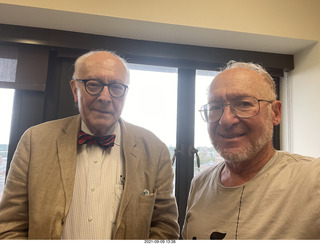 Afternoon was Robert C. Gunning,
Princeton Professor of Mathematics.
In 1973, my senior year of high school,
I spoke with Professor Gunning about
going to Princeton.
He was tall and imposing, but he was also warm and friendly.
He left a very positive impression of Princeton University,
I went to Princeton,
I never got a chance to take a course with him,
and I've wanted to have another conversation.
Afternoon was Robert C. Gunning,
Princeton Professor of Mathematics.
In 1973, my senior year of high school,
I spoke with Professor Gunning about
going to Princeton.
He was tall and imposing, but he was also warm and friendly.
He left a very positive impression of Princeton University,
I went to Princeton,
I never got a chance to take a course with him,
and I've wanted to have another conversation.
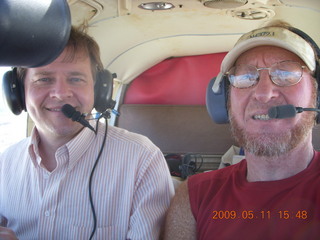 My final friend of the day,
and my most recent in this four-day nostagia trip,
is Michael J. Luddy from my work at
InterDigital Communications Corporation (IDC)
on Long Island in 1996.
Mike is a seasoned engineer with
oodles
of patents
whom I respected then
and whom I continue to respect.
He told of a recent exercise
working with phase-aligned radar,
relatively high frequency
(5 GHz, 6 cm),
cool stuff in hot technology.
We had a delightful dinner to end my Princeton day.
My final friend of the day,
and my most recent in this four-day nostagia trip,
is Michael J. Luddy from my work at
InterDigital Communications Corporation (IDC)
on Long Island in 1996.
Mike is a seasoned engineer with
oodles
of patents
whom I respected then
and whom I continue to respect.
He told of a recent exercise
working with phase-aligned radar,
relatively high frequency
(5 GHz, 6 cm),
cool stuff in hot technology.
We had a delightful dinner to end my Princeton day.
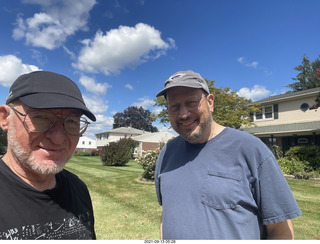 This was a friends-and-family day
in and around my old neighborhood
in Elkins Park, Pennsylvania.
Brunch was Ira,
a high-school classmate from Cheltenham Class of 1974
and, more recently, a eight-year cancer survivor.
That put an end to his career as a Medical Doctor (MD)
but not an end to his quest for world knowledge
in lots of different and interesting languages.
This was a friends-and-family day
in and around my old neighborhood
in Elkins Park, Pennsylvania.
Brunch was Ira,
a high-school classmate from Cheltenham Class of 1974
and, more recently, a eight-year cancer survivor.
That put an end to his career as a Medical Doctor (MD)
but not an end to his quest for world knowledge
in lots of different and interesting languages.
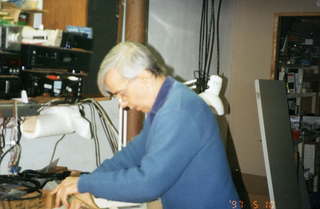 On my drive back to Elkins Park
I called my hifi-guru friend Melvin A. Schilling.
I met Mel through his "high-end" hifi-retail business
Music and Sound (his initials MAS)
in Willow Grove, Pennsylvania, and
in Woodland Hills, California.
Much of the music-reproduction equipment in my living room
came from Mel somehow going back to 1979.
He not only left a long history of very-satisfied hifi customers,
he ran a successful retail business, not the easiest thing to do,
and he took good care of his vendors.
He took unknown or less-known companies
making and selling terrific products
and made them famous.
Examples are well-known high-end-audio companies
like Audio Research, Fried, Linn, and Quad.
When audio stopped being a full-time business,
Mel continued his support to the audio community
while moving his focus into home-theater video.
All of these activities are things I admired then
and things I continue to admire.
On my drive back to Elkins Park
I called my hifi-guru friend Melvin A. Schilling.
I met Mel through his "high-end" hifi-retail business
Music and Sound (his initials MAS)
in Willow Grove, Pennsylvania, and
in Woodland Hills, California.
Much of the music-reproduction equipment in my living room
came from Mel somehow going back to 1979.
He not only left a long history of very-satisfied hifi customers,
he ran a successful retail business, not the easiest thing to do,
and he took good care of his vendors.
He took unknown or less-known companies
making and selling terrific products
and made them famous.
Examples are well-known high-end-audio companies
like Audio Research, Fried, Linn, and Quad.
When audio stopped being a full-time business,
Mel continued his support to the audio community
while moving his focus into home-theater video.
All of these activities are things I admired then
and things I continue to admire.
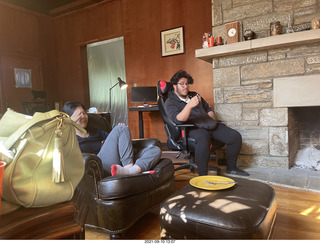
|
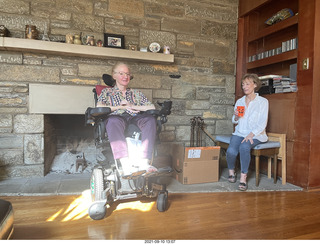
|
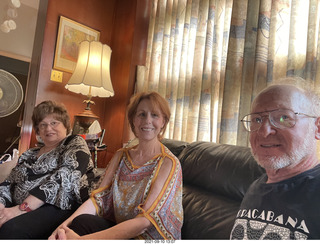
|
2021 September 11, Saturday, High-School Cross Country
My final adventure was the alumni race of the Cheltenham Cross Country team. Mike Berry, Cheltenham Class of 1980, was a cross-country star and then assistant coach for the team. He got killed in a car accident, there was sentiment for an alumni-vs.-varsity race, so we created a Mike Berry alumni race the Saturday after Labor Day starting in 1986.
If you don't want the running-biography background,
then you can skip these small-print paragraphs.
I gave humerous and proud speeches at
twenty-five,
thirty,
thirty-six,
forty, and
forty-five years
since we started running at Curtis Arboretum,
since we had a new-found team mentality.
(The thirty-fifth year had only two alumni show up,
so I saved my every-five-years speech until the next year.)
The day was also a celebration of my present
respect for the coaches, alumni, and team members.
That evening I took my flight home
on American Airlines, easy-peasy, on time and smooth.
Reflections
It was a wonderful four-day nostalgia vacation.
Every meal was with somebody from my past,
every moment went as planned without any screw-ups,
every person from my past was as wonderful as I remembered.
Having these people in my life is an honor and a privilege.
I could say I don't know what I did to deserve
having people like these, and some others,
in my life.
That's not entirely true because I did some wonderful things.
(I'm not known for modesty, then or now.)
Not everybody gets the good things he deserves,
but when it comes to the people in my life,
I got what I deserved and plenty more.
I look back on all the people I respected and admired
as a young person and I find myself respecting and admiring
them as an older person.
Maybe my expectations are more reasonable than my mother's,
but my experience has not been to put people on pedestals
only to have them disappoint me with feet of clay.
Instead my experience has been to continue
to respect and to admire my heroes
over years and decades.
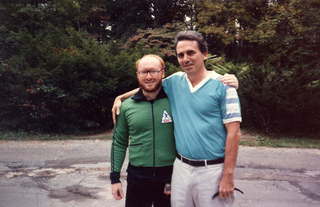 I was on the team myself my junior and senior years, 1972 and 1973.
After a bad season in 1971, two wins and twelve losses, 2-12,
the team lost two top seniors and had an even-worse season
in 1972, fourteen losses, 0-14.
Coach Tom Sexton decided the time was right to ask for help,
he cold-called Coach Tom Donnelly then at LaSalle High School,
now at Haverford College,
who helped Coach Sexton train and encourage his team
to an even season, 6-6, in 1973, my senior year.
As our longer training made us stronger that summer,
we celebrated our anticipated gains
with a new cross-country course at Curtis Arboretum.
This is the same cross-country course Cheltenham
is using today, forty-eight years later.
I was on the team myself my junior and senior years, 1972 and 1973.
After a bad season in 1971, two wins and twelve losses, 2-12,
the team lost two top seniors and had an even-worse season
in 1972, fourteen losses, 0-14.
Coach Tom Sexton decided the time was right to ask for help,
he cold-called Coach Tom Donnelly then at LaSalle High School,
now at Haverford College,
who helped Coach Sexton train and encourage his team
to an even season, 6-6, in 1973, my senior year.
As our longer training made us stronger that summer,
we celebrated our anticipated gains
with a new cross-country course at Curtis Arboretum.
This is the same cross-country course Cheltenham
is using today, forty-eight years later.
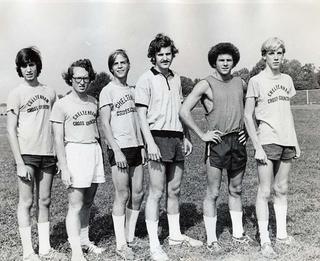 Tom Donnelly did magic at LaSalle and Haverford
in bringing a bunch of separate young boys or men
together into a team with a heart and soul that
doesn't replace the hearts and souls of the individuals
but adds its own additional energy and passion.
He taught that magic to his eager student, Tom Sexton,
who was able to create that same magic at Cheltenham,
not just in 1973, but year after year after that.
Over the years I stayed in touch with Tom and his team
and saw that magic for myself.
Tom Donnelly did magic at LaSalle and Haverford
in bringing a bunch of separate young boys or men
together into a team with a heart and soul that
doesn't replace the hearts and souls of the individuals
but adds its own additional energy and passion.
He taught that magic to his eager student, Tom Sexton,
who was able to create that same magic at Cheltenham,
not just in 1973, but year after year after that.
Over the years I stayed in touch with Tom and his team
and saw that magic for myself.
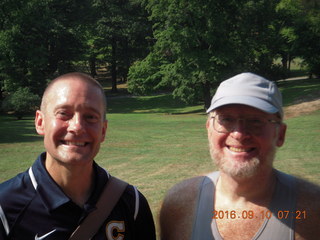 Even though knee and pulmonary-circulatory problems
keep me from competing as a runner,
I'm still bicycling and doing resistance training
to stay in shape
and I was pleased to have a few people
compliment my fit appearance.
After running the course before the others showed up
I was able to spend time with my coach Tom Sexton,
my own teammates Vince During and Jon Peller,
repeat-alumni-runners Adam Alper and Marty Keibert,
cross-country coaches Russ Wolfe and Rob Wilmer,
track coaches Bob Beale and Carl Grossman,
other alumni, and the high-school team.
The day was a celebration of my past
and my admiration for Coach Tom Sexton.
Even though knee and pulmonary-circulatory problems
keep me from competing as a runner,
I'm still bicycling and doing resistance training
to stay in shape
and I was pleased to have a few people
compliment my fit appearance.
After running the course before the others showed up
I was able to spend time with my coach Tom Sexton,
my own teammates Vince During and Jon Peller,
repeat-alumni-runners Adam Alper and Marty Keibert,
cross-country coaches Russ Wolfe and Rob Wilmer,
track coaches Bob Beale and Carl Grossman,
other alumni, and the high-school team.
The day was a celebration of my past
and my admiration for Coach Tom Sexton.
15:41:16 Mountain Standard Time
(MST).
305 visits to this web page.